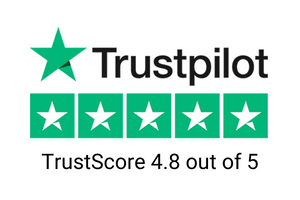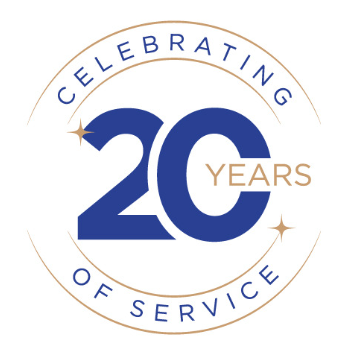Last Updated: March 19, 2024
Retirement Saving Goals and Tips

Disclaimer: We are not qualified legal or tax professionals and are not giving advice. Always speak with a qualified professional before making any legal or financial decisions.
Planning for retirement often feels like navigating through a dense fog, how much will you need, and by when? The journey to a secure retirement is filled with questions and uncertainties.
However, with the right knowledge and tools, demystifying this process is possible. Experts suggest aiming for specific savings milestones based on your age, income, and the lifestyle you envision in your golden years.
From leveraging simple yet powerful formulas like the 4% rule to understanding the impact of additional income sources and lifestyle choices, this guide offers a comprehensive roadmap to help you chart a clear path to retirement.
Whether you're just embarking on your career or looking ahead to your retirement years, it's never too early or too late to start planning for a future where you can enjoy the fruits of your labor without financial worry.
For those who'd rather skip the article, a debt specialist is available for a
free consultation.
Savings Goals
Your goals depend on your age. Kiplinger, experts in personal finance, list the following goals by age:
- By age 30, your goal is ½ of your annual income
- By age 35, your goal is 1 to 1.5 times your annual income
- By age 40, your goal is 2 to 2.5 times your annual income
- By age 45, your goal is 2.5 to 4 times your annual income
- By age 50, your goal is 3.5 to 6 times your annual income
- By age 55, your goal is 5 to 8.5 times your annual income
- By age 60, your goal is 6.5 to 11 times your annual income
- By age 65, your goal is 8 to 14 times your annual income
The median salary in the US in 2017 was 44,000. Assuming a 7% growth rate in the stock market returns, let’s see what the media person would need to set aside each year. We are going to assume, for the sake of this article, that you never get a raise or lose your job.
How much you can put into a retirement fund depends on your income, so you will need to speak with a certified retirement professional. Deposit the maximum amount allowable out of your retirement savings account and into any retirement fund and always take advantage of employer retirement funds. You can have more than one retirement account!
To reach the base funded retirement at the median salary with 7% growth rate.
- From age 20 to 21, put away at least $84 a month.
- From age 22 to 23, $125/month
- From 24 to 29, $220/month
- From 30 to 34, $325/month
- From 35 to 39, $295/month
- From 40 to 44, $634/month
- From 45 to 49, $575/month
- From 50 to 54, $750/month
- From 55 to 64, $800/month
Your final goal should be 80% of your final pre-retirement salary per year for the number of years you plan to live after retirement (usually 20-30 years).
Will That Be Enough?
The answer to that question depends on how extravagantly you plan to live. Let’s say you retire at 65 with $616,000 in retirement funds. If you live to 95, you’ll be living on under $10,000 a year. That makes life pretty bleak. Retiring at 75 does make a difference.
If you continue to let your money grow from 65 to 75, you will have roughly $860,706 in savings. This gives you about $43,000 a year to live on. The AARP offers a calculator to check retirement amounts based on your age, salary, and your desired retirement lifestyle.
Is It Even Possible?
Right now, you may be feeling a little desperate. For most people, putting $2,200 a year is a stretch. What are some actions you can take to build up your retirement account?
- Live within your means. That might mean taking fewer vacations, downsizing, and choosing not to spend money freely.
- Put any extra money you have into your retirement fund. Take a second job if you can and add all the money to your retirement. If you make your annual goal, you can always use that extra money to fund an emergency account or other savings plan.
- If you have stocks, hire a professional manager to make certain that you are diversified and investing properly to match your goals.
- Consider retiring later than earlier. This will give you more time to build up your savings. Don’t dip into your social security benefits either. You can start to receive benefits at age 62 and 8 months and must start withdrawals by age 70. Waiting until age 70 maximizes your benefits.
- If your employer offers a 401(K), sign up and contribute as much as your employer will match. It is free money and it even comes with tax advantages! Otherwise, look into another retirement plan like a Roth IRA or IRA.
What About Social Security?
All workers pay into Social Security with the expectation that those funds will be there when they retire. Unfortunately, the current legislative desire to gut and defund social security means that you should not depend on it to provide for your income. After all, it may or may not be available when you retire.
Your social security benefits take into consideration the highest paid 35 years of your work history, the age you start receiving benefits, and whether you are eligible to receive your spouse’s benefits instead. This becomes average indexed monthly earnings (AIME) and your benefits are based on it. Contact the Social Security Administration for more information about what benefits you may be able to expect.
Do You Have Too Many Debts?
If you feel you have too many debts and can barely make your minimum payments, you may need our help! Pacific Debt, Inc. can help you discover all your options. If debt settlement is right for you, we can help you to become debt-free in 24 to 36 months. If another option fits you better, we can refer you to a trusted partner.
If you have more questions, contact one of our debt specialists today. The consultation is free, and our team of debt experts will explain your options.
Retirement Account Options
When saving for retirement, two great options to consider are 401(k)s and IRAs. 401(k)s allow you to contribute pre-tax dollars, lowering your taxable income now while building funds for later. Many employers also offer matching contributions up to a certain percentage of your contributions - this is essentially free money toward retirement! The contribution limit for 401(k)s in 2023 is $22,500 for those under age 50.
IRAs also provide tax advantages compared to standard investment accounts, plus they offer more flexibility in investment choices compared to 401(k) 's limited options. The standard IRA contribution limit is $6,500 in 2023 for those under age 50.
Other accounts like Health Savings Accounts and annuities also have benefits for retirement savings. As you map out your savings strategy, be sure to maximize contributions to take advantage of compound growth over time.
How Debt Impacts Retirement Savings
Carrying debt into retirement can significantly impact your finances. Interest charges alone can cut into your nest egg. For example, $10,000 in credit card debt at a 19% interest rate costs nearly $2,000 per year in interest payments alone.
If you have high-interest debt like credit cards or payday loans, focusing on paying those balances down early is key. Options like balance transfer cards and debt consolidation loans can reduce interest rates on what you owe.
For larger, long-term debts like mortgages, pay them on schedule but consider making extra payments to pay them off faster if possible. The less debt you carry later in life, the better.
Getting professional help with debt through options like debt settlement or debt management plans can also set you up for better retirement savings. Our counselors can review your situation and match you with the right debt relief choice.
Retirement Living Costs
Average retirement living expenses range from $46,000 to $50,000 per year for those 65 and older. Key costs like housing, healthcare, food, and leisure/travel can really add up.
Reducing housing costs by downsizing to smaller homes or renting can help cap expenses. Delaying Social Security benefit claims up to age 70 also maximizes your monthly retirement income.
Finding Medicare supplement or Advantage plans can provide affordable healthcare coverage too. Being prudent with discretionary spending on travel, dining, and entertainment will help retirement savings last.
FAQs
Conclusion
Saving enough for a secure retirement takes diligent planning, but is attainable for most people. No matter where you are in your career, maximizing retirement account contributions early on thanks to compound growth makes a big impact down the road.
Take advantage of options like 401(k)s and IRAs to save on taxes now. As your income increases, keep boosting the savings rate. Managing debt, understanding full retirement costs, and optimizing Social Security and healthcare choices will provide stability too.
With the right preparation, a comfortable post-career lifestyle maintaining your standard of living is certainly possible. We can help analyze your current situation and put a tailored game plan in place to set you up for financial freedom lasting through your golden years.
*Disclaimer: Pacific Debt Relief explicitly states that it is not a credit repair organization, and its program does not aim to improve individuals' credit scores. The information provided here is intended solely for educational purposes, aiding consumers in making informed decisions regarding credit and debt matters. The content does not constitute legal or financial advice. Pacific Debt Relief strongly advises individuals to seek the counsel of qualified professionals before undertaking any legal or financial actions.
Reduce Your Credit Card Debt By Up to Half

BBB Reviews | 4.9/5.0 Rating









 Do Not Sell My Personal Information
Do Not Sell My Personal Information